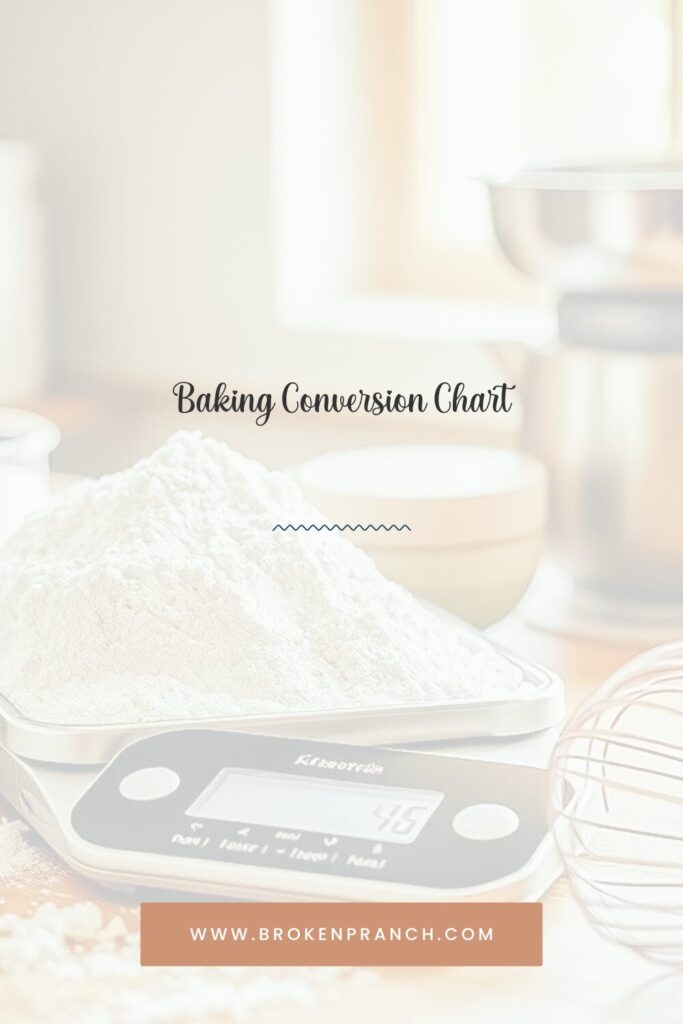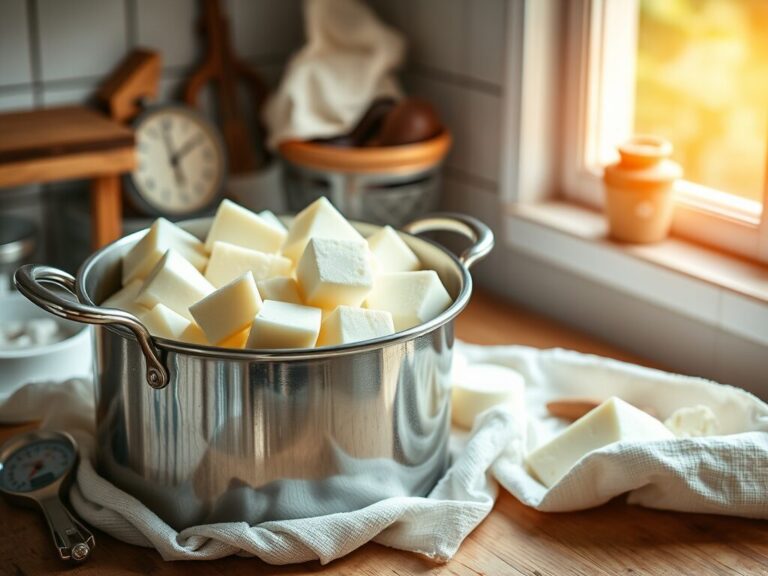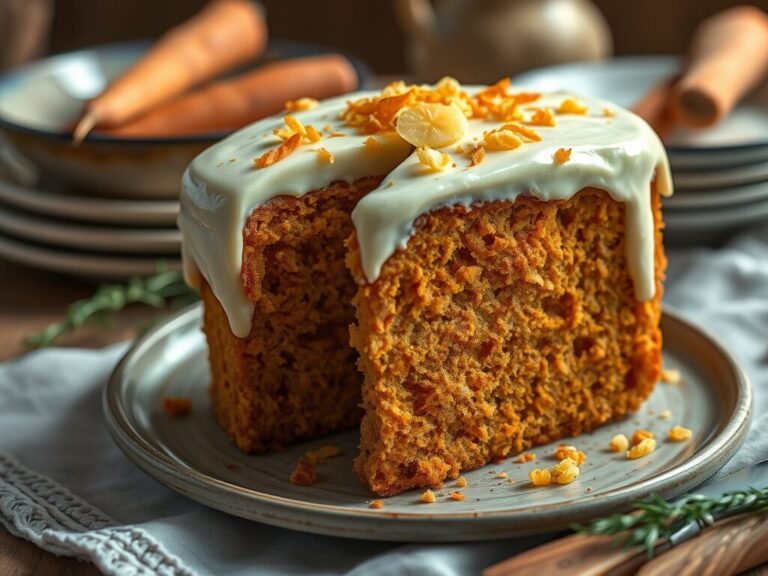Baking Conversion Chart
Whether you’re just getting started in your kitchen or are a seasoned home baker, one thing can make or break your recipe: accurate measurements. That’s why having a reliable baking conversion chart is one of the best tools to keep in your apron pocket. From measuring out flour correctly to using a kitchen scale to save time and avoid flops, this post will help you make your baked goods more consistent and delicious, every single time.

Let’s explore the nitty-gritty of baking conversions, using a handy chart to confidently whip up everything from muffins to sourdough with reliable accuracy, thanks to a conversion chart built for baking!
Measuring Flour
If you’ve ever had a cake come out too dense or cookies turn out dry, your flour measurements might be to blame. It’s surprisingly easy to over-measure flour when using cups. A packed cup of flour can have up to 25% more flour than a properly scooped and leveled one! Using a baking chart for conversions can help prevent such mishaps.
The Correct Way to Measure Flour by Volume:
- Fluff: Start by fluffing the flour in the bag or container with a spoon.
- Scoop: Gently spoon the flour into your measuring cup without shaking or tapping it.
- Level: Use the flat edge of a knife to sweep across the top of the cup and level it.
Even with this method, you can still have slight variations. That’s where a kitchen scale shines in conjunction with your baking conversion efforts.
Benefits of Using a Kitchen Scale
A digital kitchen scale is one of the most underrated kitchen tools, especially when it comes to baking, and can be reinforced with a well-constructed baking conversion chart.
Why It Makes a Difference:
- Accuracy: Measuring by weight (grams or ounces) gives you consistency that measuring by volume can’t match.
- Fewer Dishes: You can measure everything into one bowl without extra measuring cups.
- Recipe Success: Your breads rise better, your cookies spread properly, and your muffins stay moist.
For example, 1 cup of all-purpose flour should weigh around 120 grams, but it’s easy to scoop 140 grams by accident. Over time, that adds up to significant differences in texture. A conversion chart can guide you here with clarity.
Helpful Baking Tools
Want to set yourself up for baking success? Here are some must-haves beyond your measuring cups and spoons, including tools that pair well with your conversion chart.
Essential Tools for Better Baking:
- Digital Kitchen Scale – This is for accurate measurements and easy scaling, complementing your conversion chart.
- Dough Scraper – Handy for working with sticky dough and sourdough.
- Thermometer – Ensures your bread is cooked through and your water is the right temperature for yeast.
- Clear Measuring Cups (Liquid & Dry) – Both are necessary for accuracy.
- Silicone Spatula & Whisk – Gentle on bowls and great for folding in ingredients.
- Glass Mixing Bowls – Easy to clean, and you can see every angle.
Once you get used to using the right tools, baking feels less like guessing and more like crafting something magical. Incorporate a baking conversion chart for optimal results.
Sourdough Baking Conversion Chart
Sourdough baking comes with its rules, and precision matters more than ever. Here’s a handy chart for baking conversions to help you easily translate common sourdough ingredients from volume to weight.
| Ingredient | Volume | Grams |
|---|---|---|
| All-Purpose Flour | 1 cup | 120 g |
| Bread Flour | 1 cup | 130 g |
| Whole Wheat Flour | 1 cup | 113 g |
| Rye Flour | 1 cup | 102 g |
| Sourdough Starter | 1/4 cup | 60 g |
| Water | 1/4 cup | 60 g |
| Salt (fine sea salt) | 1 tsp | 5 g |
| Honey | 1 tbsp | 21 g |
| Oil (olive, avocado) | 1 tbsp | 14 g |
Note: Weights can vary slightly based on brand and humidity, but these values are reliable for home use.
This chart is beneficial when adapting sourdough recipes or feeding your starter with precision. Keeping your ratios accurate ensures better texture, rise, and flavor, guided by your trusted conversion chart.
Final Thoughts
Once you switch to using weight-based measurements and learn a few tricks of the trade, your baking will become more reliable, repeatable, and enjoyable. You won’t have to second-guess whether your bread will rise or if your cookies will flatten out just right!
If you’d like a printable version of the Sourdough Baking Conversion Chart (or a full baking cheat sheet), check out the Freebie Library at Broken P Ranch. Happy baking, friend!

